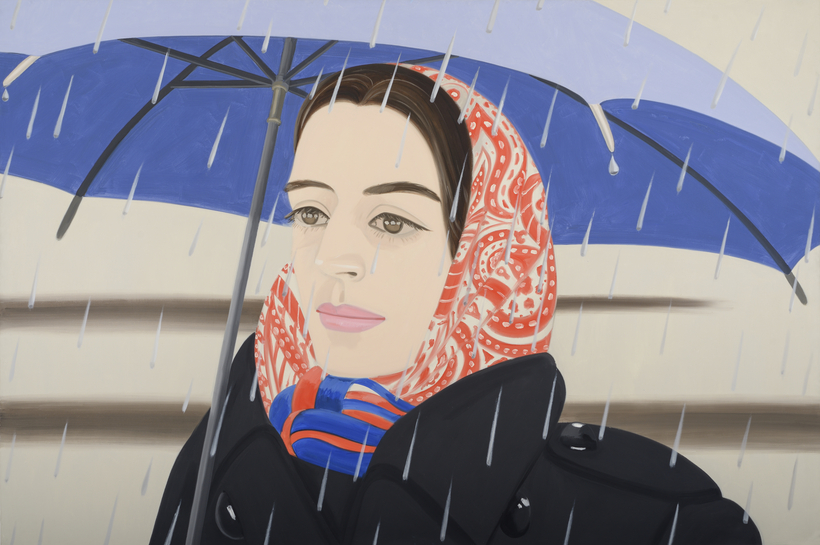In 1986, in The New York Times, the art critic John Russell offered a word of warning for visitors to the Alex Katz retrospective at the Whitney Museum. “The paintings look easy, the way Fred Astaire made dancing look easy and Cole Porter made words and music sound easy,” he wrote. “But don’t let’s be fooled.” The problem for many was—and still is—that the simplicity of Katz’s paintings belies their innovation. “Art that conceals art” is how Russell put it.
Prior to Katz’s rise to prominence, in the 1950s, the artist spent the best part of a decade slumming in New York lofts and moonlighting as a frame-maker, while searching for a way, in his words, to paint with “the same velocity as de Kooning” but in the genre of representational art. In the process, he destroyed a thousand paintings, sending them up in smoke from his fireplace.

The formula that he eventually found was a style of figurative painting that sidestepped the fashionable Abstract Impressionism of Johns, Twombly, and Rauschenberg. Instead, Katz looked back to the urbane language of Manet, the close-cropped compositions of Japanese Ukiyo-e prints, and further back still to the stasis of ancient-Egyptian sculptures. Then he took these elements and compressed them into crisp, flat portraits.
It’s seven decades later, and Katz, now 94, still paints in this manner every day, creating huge canvases of his friends, family, and his wife, Ada, who has sat for him more than 200 times.
It could be argued that because Katz has rarely strayed from his trademark, life was made easier for Guillermo Solana, the curator of the artist’s new retrospective at Madrid’s Museo Nacional Thyssen-Bornemisza. It was his job to summarize the artist’s lengthy career in just 40 works.

The exhibition contains some of Katz’s most recognizable portraits, such as The Red Smile (1963) and Blue Umbrella #2 (1972), a cinematic work that spans 12 feet. Also in the show are several of the artist’s landscapes—which, like David Hockney, Katz prefers to paint large, bright, and en plein air—as well as a handful of his lesser-known flower paintings.
Is he happy, I ask in an e-mail interview, having his career summarized so succinctly? “Outside of stage work and graphics and book illustrations,” Katz says, “yes.”
And, as an artist in his 90s, what drives him? “Things that interest me just pop up,” he replies. “I do some work from still life now, but I’m doing work from photos as well. And I’m painting direct, doing some very large landscapes direct on to the canvas, intuitively with no safety net.”
One thing not on Katz’s mind is what will happen after he’s gone. “I don’t think of my legacy,” he says stoically. —Harry Seymour
“Alex Katz” opens today at the Thyssen-Bornemisza National Museum, in Madrid
Harry Seymour is a London-based art historian and writer


 Discover
Discover